Mark Woods: Once upon a time, America sacrificed for the common good
- Oops!Something went wrong.Please try again later.
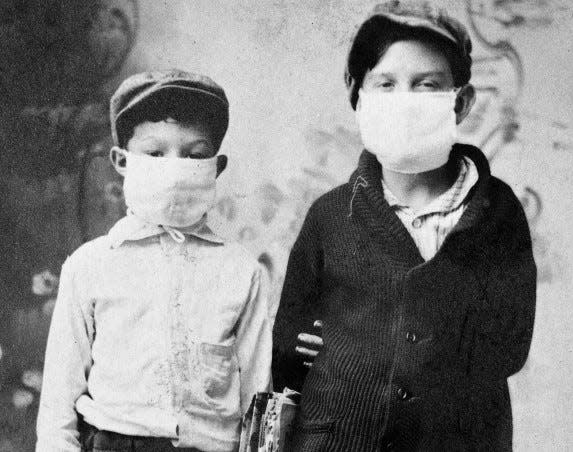
Once upon a time, Americans came together, rallying around the idea of fighting a common enemy, sacrificing for the common good.
Today the enemy is a virus. And more often than not, it seems like we’re fighting each other.
The result isn’t good for anyone. Well, other than maybe politicians, social media and cable news networks.
This was a horrible week in Florida, one in which day after day we kept breaking records for the number of people hospitalized with COVID-19, leaving physically and mentally exhausted doctors and nurses practically begging for help. For people to get vaccinated. For state leaders to take action as Florida accounted for more than 20 percent of all of the COVID hospitalizations in America.
Imagine if another state had something happen — a disease, a disaster, whatever — that led to more than 10,000 people being in hospitals at the same time. Imagine knowing that more people are going to be hospitalized in coming weeks. That’s what is happening in Florida.
The primary response of Gov. Ron DeSantis was to dismiss coverage of this as “hysteria;” to dismiss the suggestion that the state needs to reopen testing sites (“you can buy a test and just take it home”); to dismiss the idea that some hospitals were being overwhelmed by COVID; and — perhaps most of all — to double-down on dismissing masks, mandating against school mandates.
He billed this as a fight for individual freedom and liberty.
He said he wasn’t going to shut down Florida.
This statement is quickly becoming his 2024 national campaign platform and the Florida version of a “Frozen” anthem. Do you want to build a straw man?
Nobody is calling for a shutdown. OK, I’m sure somebody is. But the vast majority of people don’t want a shutdown like we experienced last year. To the contrary, they want to find ways to keep things open — safely.
The parents who rallied outside a Duval County Public Schools board meeting weren’t calling for schools to be closed. They want schools to open as scheduled next week — but with masks to help keep their children (along with teachers and staff) as safe as possible while we ride out this delta variant.
As all of this played out, I kept thinking about a story I touched on in my last column. It involved a conversation with a reader about growing up in the 1940s and 1950s.
She recalled that when someone caught any of a long list of diseases without a vaccine — measles, mumps, chicken pox — the town health department came and put a sign on the front door.
I was born after there were vaccines for these diseases. I don’t have any memories of this. But I looked it up and, sure enough, there are stories about it and photos of signs that said: “KEEP OUT.”
I tried to imagine what would happen in the past year if, after someone tested positive for COVID, a health department official showed up to post a sign on the front door. I’m guessing we’d have a fair number of stories about health department officials being shot on front porches.
I don’t want to fall into the trap of overly glamorizing the past. But if we’re going to point to another time and say that’s when America was great, if we’re going to describe another generation as the greatest, then we should recall how that greatness came from sacrifice. And not just the sacrifice of lives lost overseas. The sacrifice in daily life here at home.
During World War I, to aid the war effort, "Meatless Mondays" and "Wheatless Wednesdays" were pitched by the U.S. Food Administration. Imagine proposing that today, for any reason. We’d have people purposefully eating steak on Monday and a loaf of bread on Wednesday.
During World War II, states began rationing gas, limiting many drivers to 4 gallons per week. Imagine suggesting that today. We’d have Civil War II.
And when America turned to battling polio after the war, it was a united effort.
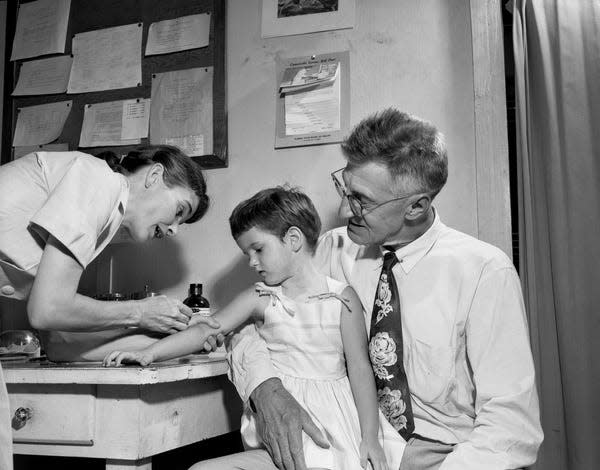
During a news conference this week with local mayors, Public Defender Charles Cofer recalled growing up in the 1950s, when polio was still paralyzing large numbers of children and young adults. He said that when a vaccine was developed, every parent and child went to a local elementary school and stood in long lines to be vaccinated.
“They did it because they understood the responsibility that they had toward their families and their community,” he said.
I began school in the next decade, the 1960s. The other day I dug out a book that my mom kept to chronicle my school years, saving class photos and report cards.
There also was a page devoted to immunizations.
A vaccine passport.
Not that anyone called it that. It just was the documentation you needed to go to school.
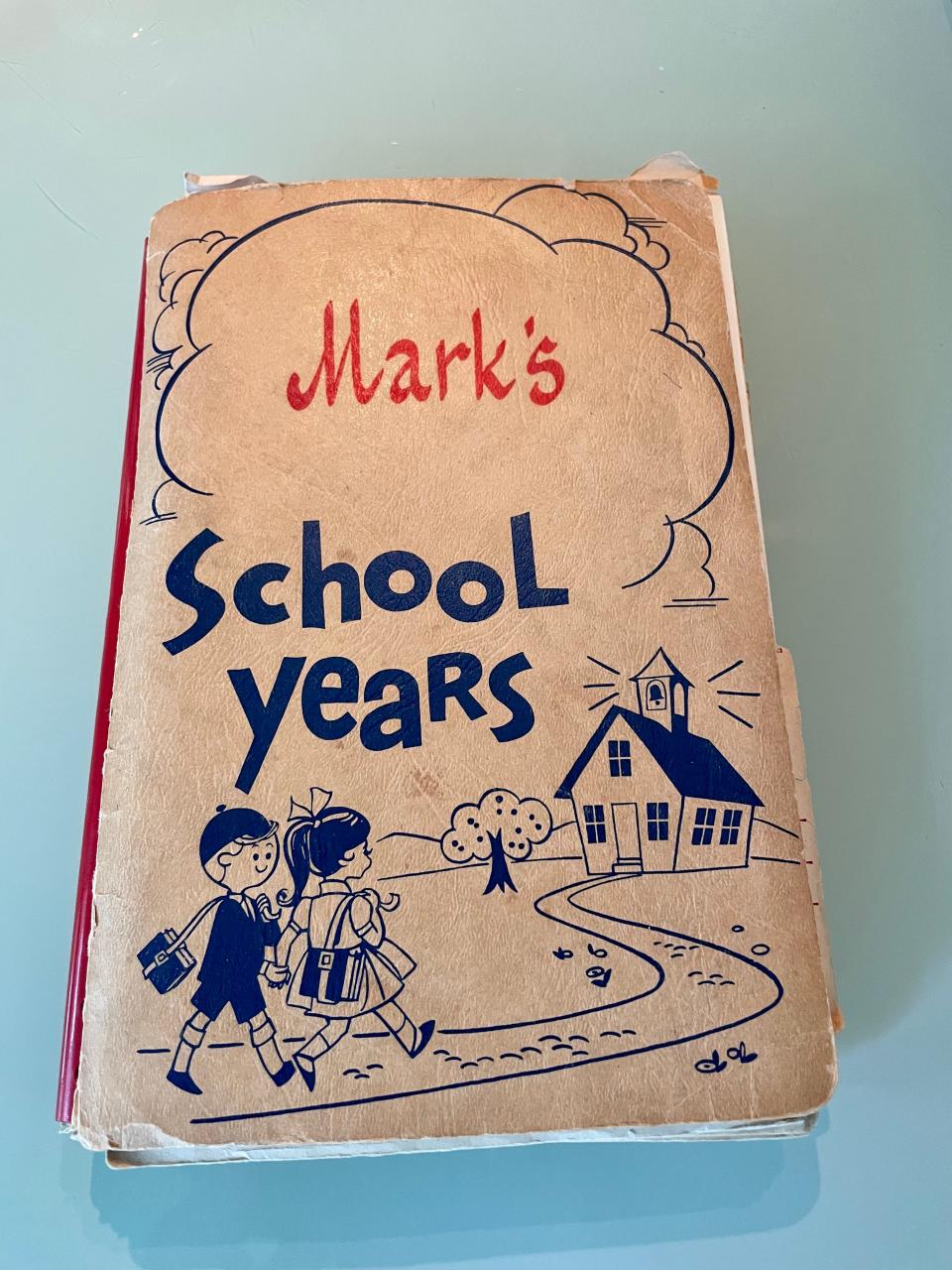
Old photos of masks, health cards and shots
This week I also went down a wonderful rabbit hole, the State of Florida archives, looking for images related to vaccines and pandemics and finding all kinds of stories.
There's a series of drawings from 1888. The text says describes Yellow Fever raging through Florida that spring. After the mayor of Tampa announced the disease was present in his city, “Alachua County placed guards at all rail and road entrances to the county, and an officer at the county line had authority to put off the train anyone without a health card or certificate. Nevertheless, Yellow Jack spread, reaching Jacksonville in July …”
Once in Northeast Florida, the first case believed to be a man named McCormick at the Grand Union Hotel, it quickly took its toll.
There are pictures of Camp Perry, where more than 1,000 people were quarantined. There’s even a drawing of the Times-Union building with this accompanying note: "This paper continued publication during the epidemic, although Edwin Martin, editor-in-chief, and M.R. Bowden, city editor, died while at the post of duty.”
Thirty years later, another pandemic hit.
There’s a photo taken in Jacksonville in 1918, of about 50 Southern Bell telephone and telegraph operators. All are wearing masks.
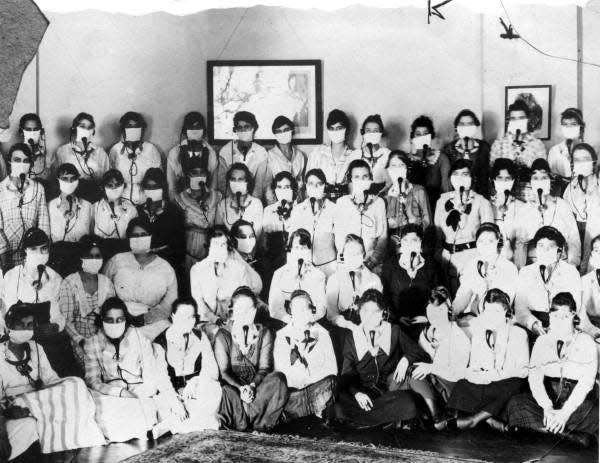
There’s another photo labeled: “Children ready for school during the 1918 flu pandemic.”
Two boys, Don Hoover and Joe Sistrunk, are wearing dark knickers, high socks, newsboy caps — and white masks.
There even are photos of past Florida governors getting shots in their arms, from LeRoy Collins (for an overseas trip) to Jeb Bush (for the flu).
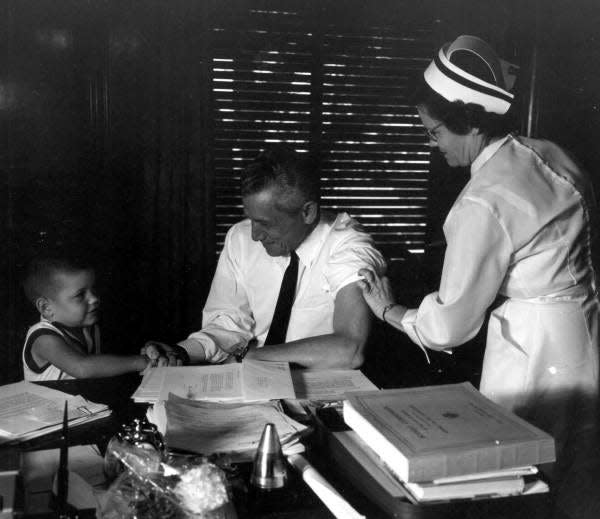
For what it’s worth, there isn’t a similar photo of our current governor getting a COVID vaccine. He isn’t shy about photo ops. He has been known to have photographers take pictures of him signing a bill in one part of the state, then travel to another part of the state to pose for more pictures signing the same bill. But when he got vaccinated, if any photos were taken, they weren’t made public.
Put some of these details together and what’s striking is how it contrasts with what is happening today.
Once upon a time, if school officials felt masks would help prevent the spread of a deadly virus, they could make the decision to require students to wear them. Now the Florida governor tries to forbid this, joining forces with some who say mask mandates are child abuse and, more broadly, a path to socialism.
Once upon a time, a time when America’s population was much less than today, about 100 million people rolled up their sleeves and got polio vaccines. Now about 50 percent of the American population is fully vaccinated for COVID — and Florida is one of the states below 50 percent and, not by coincidence, atop the nation in cases and hospitalizations.
Once upon a time, in the middle of another pandemic, passengers on a train headed for North Florida carried health cards. Now the state has mandated that no business — not even cruise lines that want to avoid having a floating COVID petri dish miles from shore — can require that passengers be vaccinated.
Once upon a time, Americans came together, fighting a common enemy, sacrificing for the common good.
Now two Florida women have joined a lawsuit seeking to end the airline mask mandate. One said that, because of it, she couldn't fly to Hawaii for vacation. She also has said she wants to promote the kind of health her grandparents’ generation experienced.
“When they got sick, they didn’t need the crutch of pharmaceuticals or antibiotics to get better,” she says in a YouTube video. “They just got sick and they got well.”
Only, of course, a lot of them didn’t get well.
mwoods@jacksonville.com, (904) 359-4212
This article originally appeared on Florida Times-Union: America once sacrificed for the common good, but Florida isn't | Mark Woods

